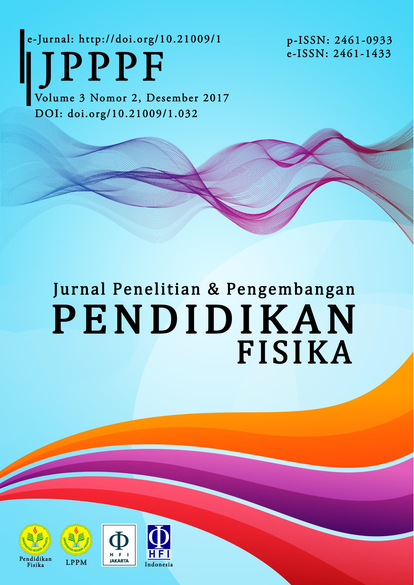Identifikasi Miskonsepsi dan Penyebab Miskonsepsi Siswa Menggunakan Four-Tier Diagnostic Test Pada Sub-Materi Fluida Dinamik: Azas Kontinuitas
DOI:
https://doi.org/10.21009/1.03208Keywords:
Misconception, Continuity, Four-Tier Diagnostic TestAbstract
In Physics learning, misconception is often experienced by students, including on Dynamic Fluid materials namely Continuity Platform. This study aims to identify misconceptions that occur in the subject matter of the Continuity Platform and identify the concept's weakness as the cause of the misconception. The study was conducted on 37 students in one high school in Bandung with one shoot research method. The diagnosis of student misconceptions is done using a four-tier diagnostic test instrument which is the development of a three-tier test instrument by adding a confidence level to the third tier. The results of the diagnosis showed that students who experienced misconceptions of 28%, students who understand some 35%, students who understand the concept only 6%, students who do not understand the concept of 30% and students who cannot be coded 0%. Based on the results of the observation on the learning process and the analysis on the third and fourth tier answers, misconception that occurs is generally due to the student's inappropriate logic that students assume that the fluid has a large speed has a large fluid pressure, and fluid has a small speed has a small fluid pressure.











